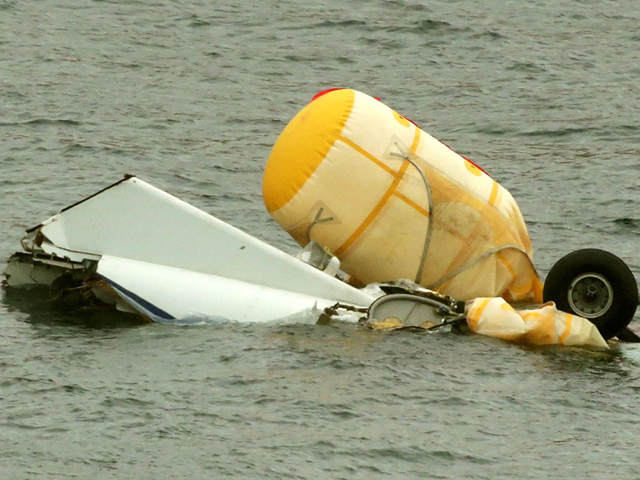
The crew of a helicopter that plunged into the North Sea killing four people failed to notice its speed was dropping drastically seconds before it hit the water.
A new report by investigators has revealed that neither the pilot nor the co-pilot of the Super Puma realised how much it had slowed until it was too late. It was also in a “vortex ring state” – a dangerous condition that causes a severe loss of lift.
The CHC Helicopter-operated aircraft crashed off Shetland within sight of Sumburgh Airport earlier this year. The Super Puma L2 turned upside down when it hit the sea. Fourteen people were rescued.
Yesterday, the Air Accidents Investigation Branch (AAIB) revealed more details of the final moments of the doomed flight and cockpit exchanges between the pilot and the co-pilot – and said it had found no evidence of a technical fault.
The crash claimed the lives of Sarah Darnley, 45, from Elgin, and Gary McCrossan, 59, from Inverness, as well as Duncan Munro, 46, from Bishop Auckland and George Allison, 57, from Winchester.
The AAIB has examined information from the flight data recorder and said the crew had set the minimum descent height on approach to the runway at 300ft.
Alarms were primed to give a warning if the helicopter fell below that height. Autopilot was selected and all was going well with the descent until about 2.3 nautical miles from Sumburgh.
The report says: “The commander – who was flying the aircraft – noted that the airspeed was 80 knots and increased the collective pitch to maintain this speed. However, the helicopter’s airspeed reduced below 80 knots and continued to reduce, unobserved by the crew.”
The co-pilot warned the commander that the aircraft was 100ft above the minimum descent altitude of 300ft and the commander acknowledged this.
An automatic “check height” warning was then given and also acknowledged by the commander.
The report reveals there was then “a comment by the co-pilot to draw the commander’s attention to the airspeed”.
It adds: “At this time, the helicopter’s airspeed was 35 knots – about 40mph – and reducing.
“Shortly thereafter, there was a second automated call of ‘check height’ followed by a ‘100ft’ automated call two seconds before the impact with the surface of the sea.
“At some point, the commander saw the sea, but he was unable to arrest the helicopter’s descent.”
The reports says the co-pilot, realising the aircraft was entering the water, armed the flotation system. The AAIB also said the combination of a nose-high attitude, low air speed, high rate of descent and high power placed the Super Puma in a “vortex ring state” during the final stages of the flight. This phenomenon causes severe loss of lift and essentially the helicopter descends into its own downwash.
Manufacturer Eurocopter’s own modelling has indicated that, in this condition, the reduced performance and limited height available meant the crash was unavoidable.
“The report describes the context of what was happening in the lead-up to the accident, but does not tell us yet why it happened,” said Duncan Trapp, vice-president of safety and quality at CHC Helicopters.
“That is where the AAIB will continue to focus their investigation and CHC have an ongoing investigation of our own.”
The AAIB said the “survivability aspects” of the accident were still being investigated. It has called for a review of the sea rescue capability at Sumburgh after the airport rescue boat could not be launched close to the runway where the Super Puma was heading and took 58 minutes to reach the scene.
“It is recommended Highlands and Islands Airports provides a water rescue capability, suitable for all tidal conditions, for the sea west of Sumburgh, appropriate to hazard and risk, for times when the weather and sea state are conducive to such rescue operations,” the AAIB said.